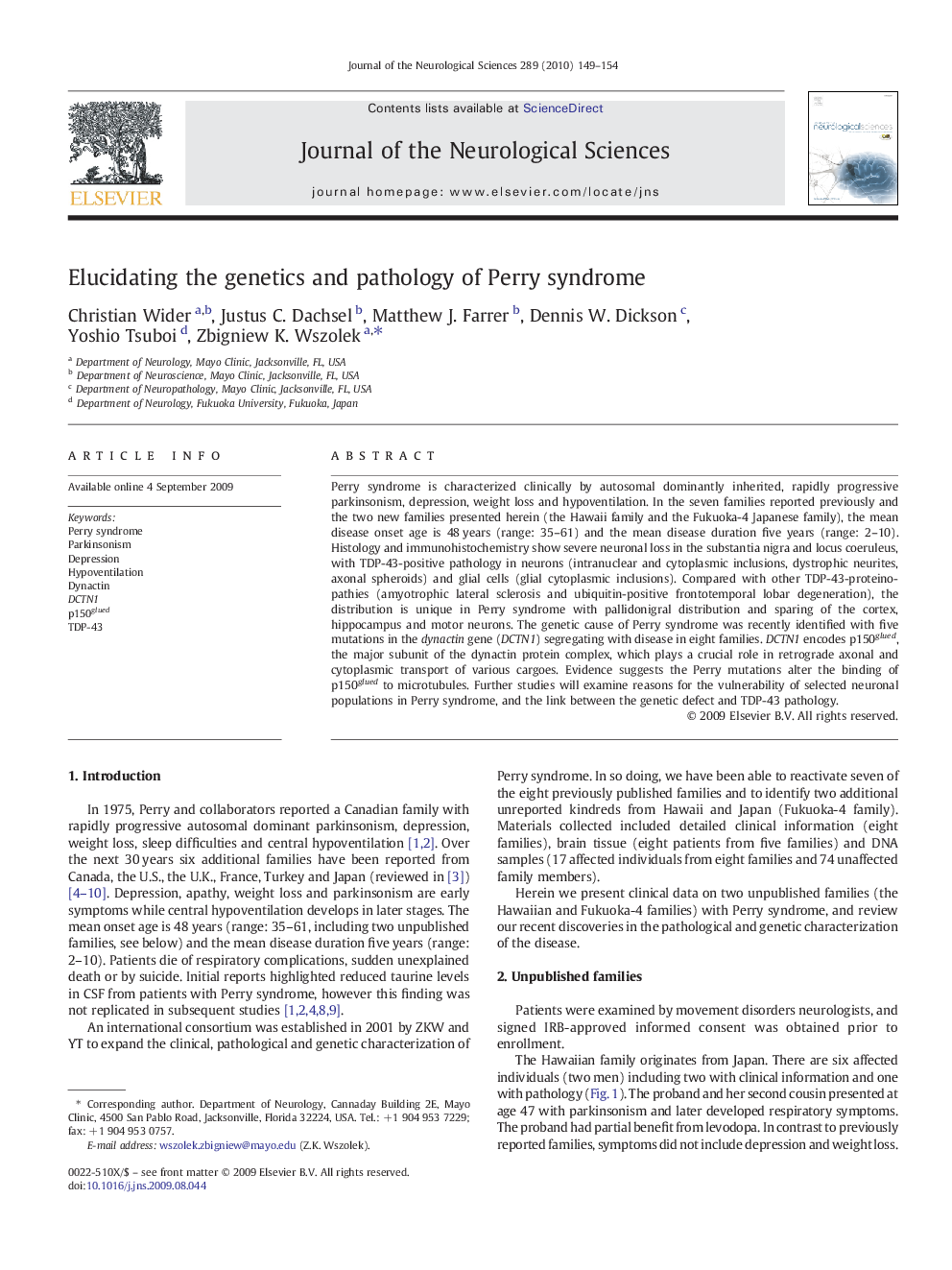| Article ID | Journal | Published Year | Pages | File Type |
|---|---|---|---|---|
| 1914885 | Journal of the Neurological Sciences | 2010 | 6 Pages |
Perry syndrome is characterized clinically by autosomal dominantly inherited, rapidly progressive parkinsonism, depression, weight loss and hypoventilation. In the seven families reported previously and the two new families presented herein (the Hawaii family and the Fukuoka-4 Japanese family), the mean disease onset age is 48 years (range: 35–61) and the mean disease duration five years (range: 2–10). Histology and immunohistochemistry show severe neuronal loss in the substantia nigra and locus coeruleus, with TDP-43-positive pathology in neurons (intranuclear and cytoplasmic inclusions, dystrophic neurites, axonal spheroids) and glial cells (glial cytoplasmic inclusions). Compared with other TDP-43-proteinopathies (amyotrophic lateral sclerosis and ubiquitin-positive frontotemporal lobar degeneration), the distribution is unique in Perry syndrome with pallidonigral distribution and sparing of the cortex, hippocampus and motor neurons. The genetic cause of Perry syndrome was recently identified with five mutations in the dynactin gene (DCTN1) segregating with disease in eight families. DCTN1 encodes p150glued, the major subunit of the dynactin protein complex, which plays a crucial role in retrograde axonal and cytoplasmic transport of various cargoes. Evidence suggests the Perry mutations alter the binding of p150glued to microtubules. Further studies will examine reasons for the vulnerability of selected neuronal populations in Perry syndrome, and the link between the genetic defect and TDP-43 pathology.
